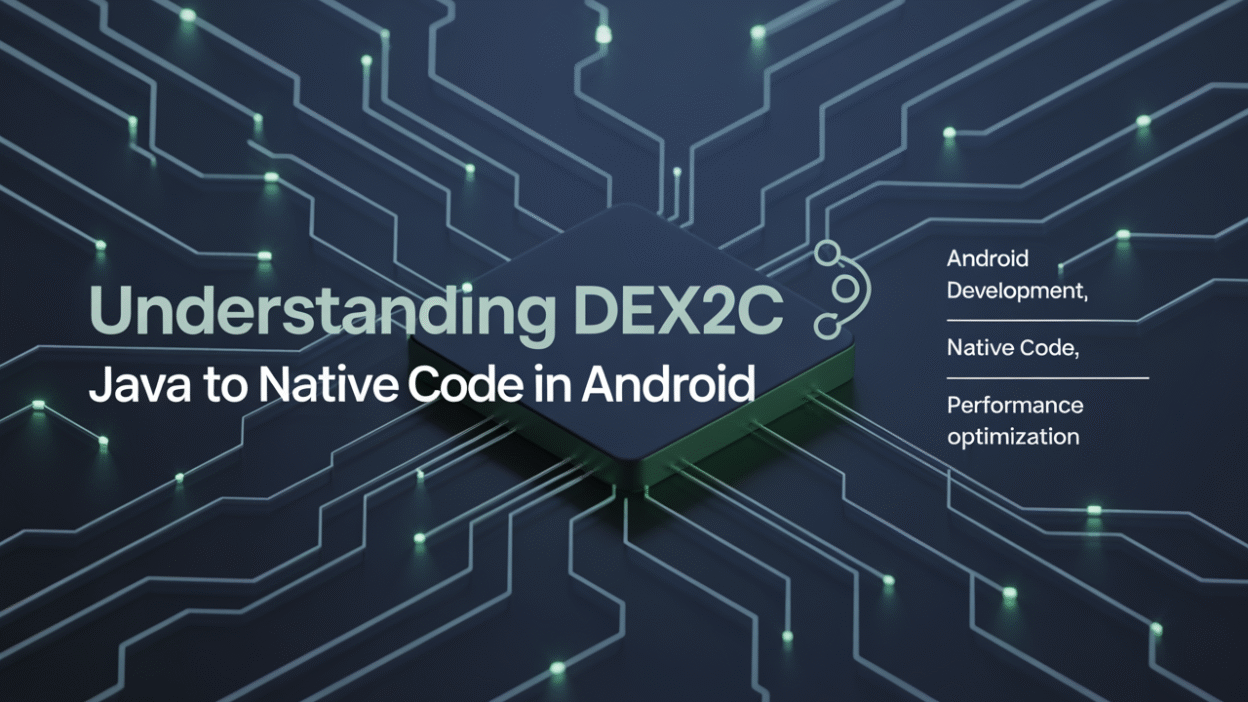In the ever-evolving landscape of Android development, security and performance optimization remain key priorities for developers. One innovative approach that has gained traction in recent years is Dex2C, a technique used to transform Java layer code found in Android applications into native C code . This method not only enhances application security but also presents opportunities for performance improvements.
What is Dex2C?
Dex2C is a compiler tool that converts Dalvik Executable (DEX) bytecode—commonly found in Android apps written in Java or Kotlin—into semantically equivalent C code . The transformation occurs at the method level, allowing developers to translate critical sections of an app’s logic into native code. By doing so, the resulting binary becomes significantly more challenging to reverse-engineer, offering a robust defense against malicious tampering and intellectual property theft .
Why Use Dex2C?
Enhanced Security
One of the primary motivations behind using Dex2C is to protect sensitive application logic from static and dynamic analysis . Traditional DEX files are relatively easy to decompile, exposing business-critical algorithms and encryption routines. When these methods are converted into compiled C code, the obfuscation level increases dramatically, making reverse engineering both time-consuming and resource-intensive for attackers .
Performance Optimization
While the main goal of Dex2C is not necessarily performance enhancement, there are scenarios where converting Java code to C can lead to faster execution times. Native code typically runs closer to the hardware, bypassing some of the overhead associated with the Java Virtual Machine (JVM) or Dalvik/ART runtime environments . However, it’s important to note that in certain cases, performance degradation may occur due to additional JNI (Java Native Interface) transitions and memory management complexities .
How Does Dex2C Work?
At its core, Dex2C operates by parsing DEX bytecode and translating each method into an equivalent function in C . The generated C code retains the original behavior of the Java method but is compiled into a native shared object (.so file), which can be loaded and executed within the Android environment. Some advanced implementations integrate LLVM (Low-Level Virtual Machine) to further optimize and harden the generated binaries .
This process enables developers to selectively protect specific methods rather than the entire codebase, balancing security needs with maintainability. Additionally, since the output is native code, it can be combined with other protection mechanisms such as anti-debugging and integrity checks .
Real-World Applications
Several companies have adopted Dex2C-based solutions for protecting their Android applications. For instance,网易易盾 introduced a Dex-to-C protection scheme known as Java2C, which transforms application logic into binary code, thereby improving both installation efficiency and runtime speed . Similarly, open-source projects like DCC (Dex-to-C Compiler) offer customizable frameworks for implementing Java-to-C transformations while integrating native-level protections .
Challenges and Considerations
Despite its advantages, Dex2C is not without drawbacks. Developers must carefully weigh several factors before adopting this technique:
- Increased Complexity: Integrating native components introduces complexity in debugging, testing, and maintaining codebases.
- Potential Performance Overhead: As noted earlier, excessive use of JNI calls between Java and C layers can result in slower execution times under certain conditions .
- Compatibility Issues: Native code must be compiled for each target architecture (e.g., ARMv7, ARM64, x86), increasing APK size and deployment complexity.
Conclusion
Dex2C represents a powerful tool in the arsenal of Android developers seeking to enhance both the security and performance of their applications. By transforming Java methods into native C code, developers can obscure sensitive logic and potentially improve runtime efficiency. However, the decision to adopt Dex2C should be made with careful consideration of trade-offs related to maintainability, compatibility, and performance implications .
As mobile threats continue to evolve, techniques like Dex2C will play an increasingly vital role in safeguarding digital assets while pushing the boundaries of what’s possible on Android platforms.
